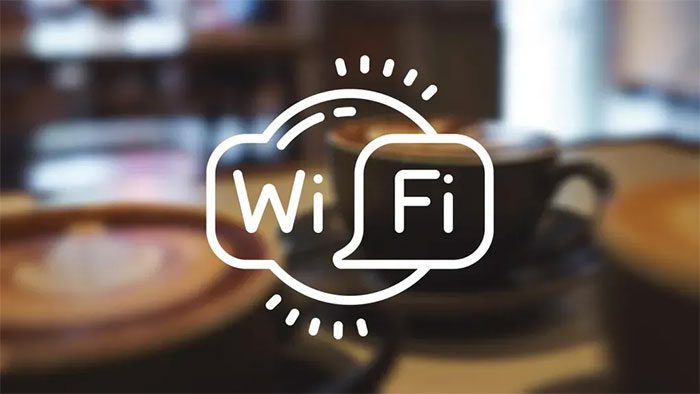Wi-Fi 7 is the successor to Wi-Fi 6E, promising to significantly enhance the speed and stability of your wireless connections.
Many people have just upgraded to Wi-Fi 6, and some may be considering switching to Wi-Fi 6E, but now Wi-Fi 7 has emerged. This is the next important step into the future, and like its predecessors, the new standard promises faster connections, lower latency, and the ability to manage more connections than ever before.
If you’re looking to improve your Wi-Fi today, Wi-Fi 7 is not the answer, as it is still over a year away (and in fact, it will take even longer for everyone to adapt to it). If you need to upgrade, first, let’s explore what Wi-Fi 7 is.
The 7th generation of Wi-Fi promises significant improvements over Wi-Fi 6 and 6E, potentially offering speeds up to 4 times faster. It also includes smart advancements to reduce latency, increase capacity, and enhance stability and efficiency.

Wi-Fi 7 will be faster and support more connections.
Wi-Fi 7 is referred to as IEEE 802.11 under the old naming convention, where Wi-Fi 6 is IEEE 802.11ax and Wi-Fi 5 is IEEE 802.11ac. Like previous standards, Wi-Fi 7 will be backward compatible. However, to take advantage of the new features and improved performance it promises, you’ll need to upgrade your devices. This means purchasing new routers and access points, not to mention new smartphones, laptops, TVs, etc.
Wi-Fi 7 will be faster, support more connections, and be more adaptable to maintain reliable low-latency performance.
These benefits will help deliver high-quality video and better cloud gaming, while also serving AR and VR applications that require high throughput and low latency. Wi-Fi 7 also addresses congestion and interference issues, providing clear advantages in densely populated areas or overlapping networks. This is a crucial factor for businesses and crowded access locations.
You may be wondering what distinguishes Wi-Fi 7 from Wi-Fi 6E. The key advantage lies in the opening of the 6 GHz band. Specifically, Wi-Fi 7 will utilize three bands: 2.4 GHz, 5 GHz, and 6 GHz. Below are some notable upgrades.
Wider Channels
Each band is divided into channels. The 2.4 GHz band includes 11 channels of 20 megahertz (MHz) each. The 5 GHz band has 45 channels, but instead of being limited to 20 MHz widths, they can combine to create 40 MHz or 80 MHz channels. The 6 GHz band supports 60 channels, and with Wi-Fi 6E, they can be up to 160 MHz wide. Wi-Fi 7 supports channels up to 320 MHz wide. The wider the channel, the more data can be transmitted.
To simplify, imagine the traffic capacity of a single-lane road compared to a three-lane highway or a six-lane superhighway.
Higher QAM
Quadrature Amplitude Modulation (QAM) is a method of transmitting and receiving data using radio frequency waves. The higher the QAM, the more information you can transmit. Wi-Fi 7 supports 4K-QAM, Wi-Fi 6 supports 1024-QAM, and Wi-Fi 5 is limited to 256-QAM.
The potential benefits are complicated by signal strength, surrounding noise, and interference. Thus, as QAM increases, the range decreases, requiring a stronger signal. Therefore, the jump to 1024-QAM in Wi-Fi 6 provides approximately a 25% increase in data rates compared to Wi-Fi 5. The leap to 4K-QAM in Wi-Fi 7 means a 20% performance boost.
Perhaps the most exciting advancement in Wi-Fi 7 is Multi-Link Operation (MLO). Every previous Wi-Fi standard established a connection between two devices on a single band. Even the tri-band Wi-Fi 6E routers connect two devices on one band on a fixed channel (the router decides to connect on either the 2.4 GHz, 5 GHz, or 6 GHz band).
MLO can combine multiple frequencies across bands into a single connection. A Wi-Fi 7 router can connect simultaneously with Wi-Fi 7 devices on two or more channels across different bands. MLO has the potential to allow wider channels to transmit more data — going back to our highway analogy, you can send traffic on both the highway and the superhighway at the same time.
Speed is not always the priority, but MLO also allows for more efficient operation. A Wi-Fi 7 router can take congestion and other interference into account and transmit on the best channel to overcome it, switching to maintain a stable connection and low latency.
Wi-Fi 7 also enhances existing technologies such as OFDMA, MU-MIMO, and TWT.
It may take over a year before we see the first Wi-Fi 7 devices and routers launched, but the new standard is beginning to take shape.
Qualcomm has announced the Wi-Fi 7 chipset and the Networking Pro Series platform, which can deliver 4-band connection speeds of up to 33 Gbps over 16 streams. Partners are working to integrate their technologies into devices. Broadcom and MediaTek have also announced Wi-Fi 7 technology. There is no doubt that many providers will unveil plans in the coming months as the new standard solidifies and is officially designated by the Wi-Fi Alliance.
Even when Wi-Fi 7 arrives, it will not immediately replace Wi-Fi 6. Both are likely to coexist as complementary technologies for many years to come.





















































